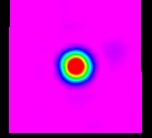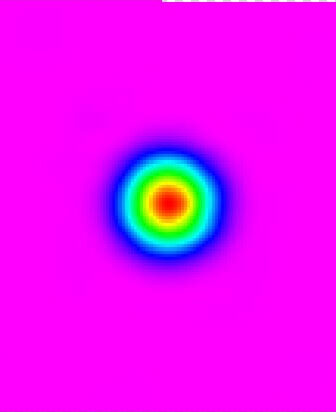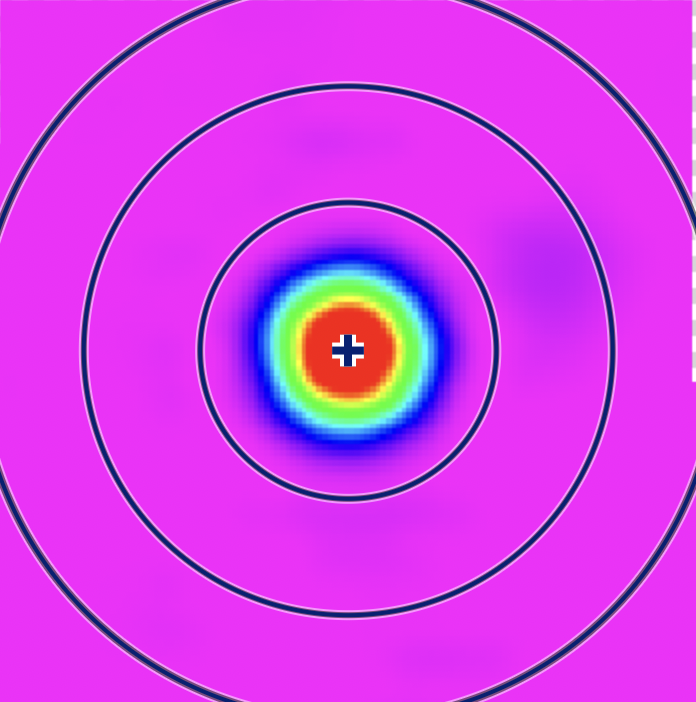In module 1A, we observed the Moon using optical imaging, observing it’s surface features. In module 1B, we tested radio imaging to find the temperature of the Moon. We used the 20 meter telescope at the Green Bank Observatory in West Virginia. Radio Imaging is much cleaner, as you can take pictures during the day, and it can see through the Earth’s atmosphere and space dust. Radio telescopes are very different from optical telescopes, as radio telescopes have parabolic reflector mirrors to collect light, rather than an optical telescope that uses a lens. The main difference is that instead of using thousands of pixels to compile an optical image, a radio image is taken on a one-pixel camera.
We began by placing our radio observation in skynet, setting our target to the Moon. We set the minimum sun elevation to 10, and minimum target elevation to 20. We then selected the frequencies we wanted to receive and the method by which we would receive them. We used the GBO 20m’s L-band receiver on low-resolution mode, and filtered the frequency from 1355 GHz to 1435 GHz, so it only picks up what we want it to, as we want to avoid human interference. We wanted to make a 6×6 rectangular picture of the moon, so we set our path type to “map”, and set our point of view. The telescope has to move back and forth to efficiently make a picture of the moon, so we set the width to 6×6. Lastly, we decided how long we want the telescope to stay at each point, so we set our exposure time to 0.3 seconds and submitted our observation.
After our exposures came back, the other half of our group put in their observation, so we could see the difference in the data based off the phase of the Moon. One member of our group photographed the calibration object for the moon, Virgo A, and another member photographed the moon. Photographing Virgo A allows us to discern discrepancies in the moon’s data, which then allows us to make inferences about the moon’s temperature. We then checked our preliminary data in the Green bank system to look for disturbances in the data. Thankfully, my data was clean, so I didn’t have to remove any spots. We downloaded our data and uploaded it into Skynet so we could see our final product.


Pretty!
We started off by measuring the brightness by using aperture photometry. Aperature photometry works by drawing 3 circles around the source, and measures the brightness between them. We changed our photometry settings to a constant aperture, with a centroid and aperture radius to 28. The region between each aperture is called the annulus, so we changed the inner annulus to 50 and the outer to 70.

We clicked near the center of the image, and afterglow drew the aperture, annulus, and measured the sources flux density. The flux density is calibrated by measuring the average brightness in noise-source units between each annulus, and averaging them. The other half of the group did the same, and we compared our data. We took the moon now flux density data and divided it by the moon later flux density to see how much brighter the first picture was. We then multiplied that number by the known flux density to figure out our own flux density in Janskies. By comparing the Moon now’s flux density and the Moon later’s flux density, it turns the units from noise-source into actual, tangible units. The flux density for my moon image was 855.457.
To figure out the temperature, we need the distance, so we used Stellarium to compute the distance from when our observation was taken. The distance to the moon at the time I took my observation was 392119.421 KM. We then computed the temperature of the moon using this formula:

My final temperature of the moon was 231.562153697 Kelvin. We were able to compare our observed temperate of the moon from other professionals’ temperatures, which is around 250 kelvin. Compared to the professional temperatures, I was not far off. Overall, in this lab, we learned how to take radio images of the moon now and later by using a parabolic reflector, which later allows us to compare those images to find out important features of the moon, such as the overall temperature based on its energy emission and brightness. We also learned how to analyze radio data, calculate the flux density, and find the temperature of the moon. An important question when measuring the Moon’s energy emission and brightness is whether that light is reflected light or absorbed and thermally re-emitted sunlight. I conclude that the Moon’s light is absorbed and thermally re-emitted sunlight since the radio light stayed constant as the moon’s phase diminished, and since it is on the blackbody spectrum. If the Moon was reflecting light, as the moon phase got darker, the radio light would diminish over that period.